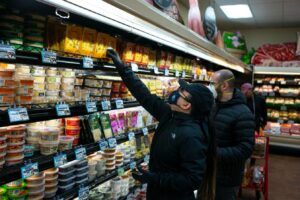It’s a modern-day problem that hundreds of millions of people will be all too familiar with. Smartphones mean they almost always have a camera at hand, but keeping track of all those photos can be hard work and frustrating. Indeed, many people have huge and growing libraries of photos on their phone that they struggle to organise. Finding old pictures and favourite images can be tricky.
A growing number of businesses spy a business opportunity. The photo management software market globally was worth $3.5 billion last year and is now growing at an annual rate of almost 6% according to DataHorizon Research. By 2032, the market is expected to be worth $5.9 billion.
It’s a sector dominated by some of the big names in technology, with Google, Apple and Microsoft all offering solutions, alongside well-known brands such as Dropbox and Flickr. But one British start-up is also growing rapidly – Popsa, launched in 2020, has just revealed that its revenues increased to $44 million (£33 million) last year.
Popsa describes itself as a “photo curation service”. Founded by entrepreneurs Liam Houghton and Tom Cohen, the business has developed an app that has so far been downloaded by 2 million customers in 50 countries worldwide. “We’ve all got these photo libraries that are hugely valuable to us, but we don’t know how to manage them,” says Houghton. “We recently conducted research that found 60% of people were scared of losing their photos – and that 45% were overwhelmed by the number of images stored on their phones.”
Houghton and Cohen believe that artificial intelligence has an important role to play in helping people to overcome these issues. Popsa’s app uses a range of algorithms to categorise users’ images – from data on when they were taken to recognition of people and places in the photos – so that they can be automatically organised into relevant folders and albums.
“We want to help people with the problem of how they look back meaningfully on their phots when so many images are so mixed up,” Houghton adds. “It’s the next generation of the photo library.”
The company has so far taken on around $25 million (£19 million) of investment from backers including Gresham House Ventures, Pembroke Investments and Guinness Asset Management, and has also featured in Deloitte’s annual rankings of the UK’s fastest-growing technology companies.
Popsa’s revenues stem from a business model that offers users free access to the app but monetises through the sale of physical products. Users can order prints of photos, for example, and hard copies of photo albums. It’s a cash-generative model with customers paying upfront for their purchases and Popsa fulfilling their orders through local partners in a dozen countries worldwide.
The value proposition effectively aligns Popsa with its users, Houghton argues – the more it can help people to identify and organise their pictures, the more likely they are to make selections of photos where they want hard copies. “Right now, discovery and curation is a real puzzle for most people.”
Still, the company is operating in a crowded market. As well as the technology giants offering support for people looking to simply manage their photos, Popsa must also compete with the growing number of photo book services. One recent report published by the independent consumer group Which? pointed to a slew of high-performing companies in this segment, with Rosemood, CEWE, Papier and Photobook UK all scoring highly. Other well-known competitors include MixBook, Snapfish and Shutterfly.
Still, Popsa also rates highly on review sites such as Trustpilot, and Houghton argues that the company’s willingness to reinvest in research has boosted product development. The business has also broken into profit, providing a sustainable base for further growth.
Houghton also says the company’s lean model can help it to remain competitive in a market where some consumers have complained about rising prices. Despite its strong growth, the company operates with the same number of employees as it did five years ago, having invested in automation technology to streamline many of its processes. “We’re on target to achieve $1 million of revenue per employee this year, which is around 5 to 6 times more than the average UK tech company,” Houghton adds.
Read the full article here











